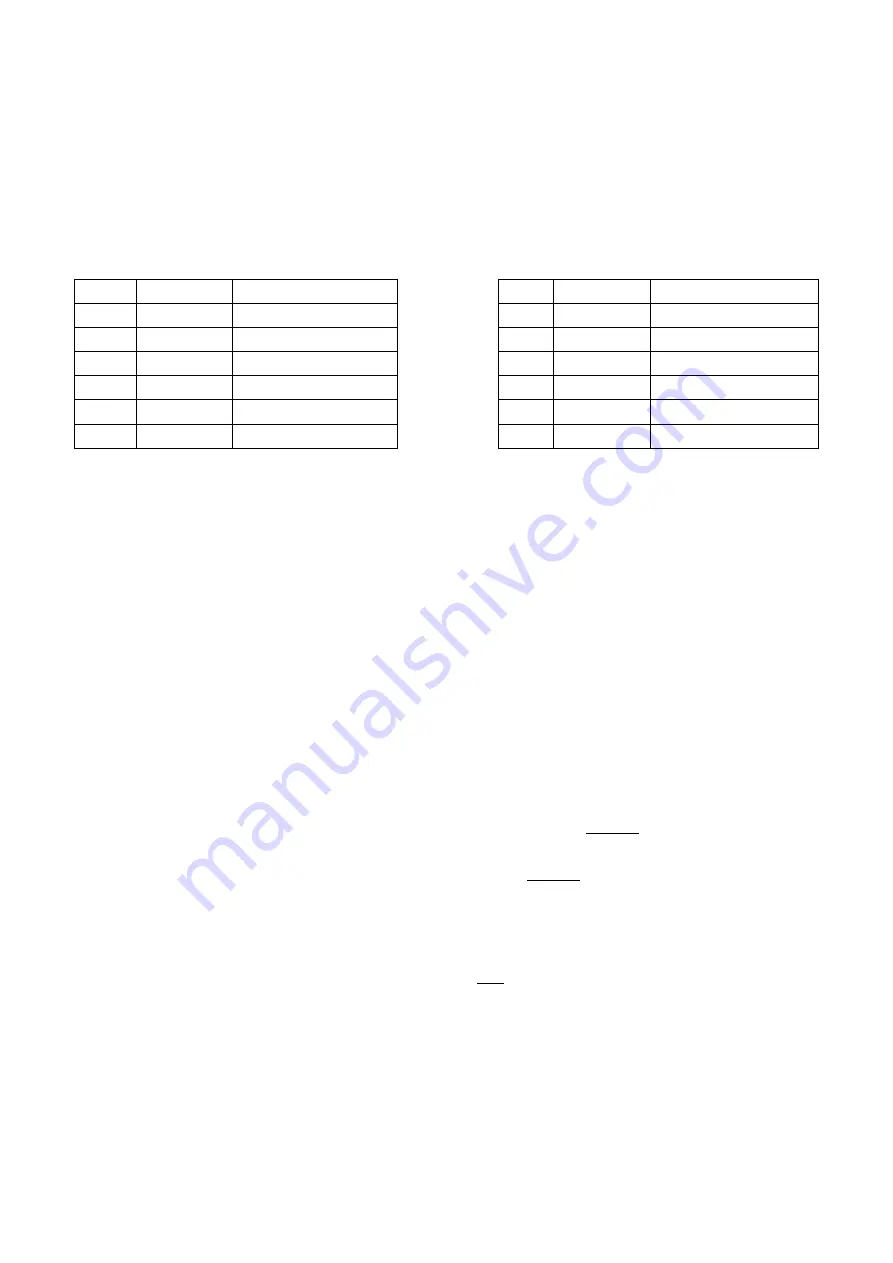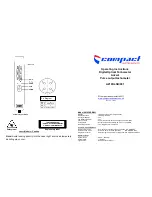
- 16 -
3. SPECIFICATIONS
3-1. Measurement Range
With 100
Ω source resistance, there are five ranges: 31.6Ω, 100Ω, 1kΩ, 10kΩ, 100kΩ.
With 30
Ω source resistance, there are six ranges: 10Ω, 30Ω, 100Ω, 1kΩ, 10kΩ, 100kΩ.
The effective measurement range is listed as below.
Table 3-1 Effective measurement range
with 100
Ω source resistance
Table 3-2 Effective measurement range
with 30
Ω source resistance
No.
Resistance
Effective mea.range
No.
Resistance
Effective mea.range
0
100kΩ
100kΩ-100MΩ
0
100 kΩ
100kΩ-100MΩ
1
10kΩ
10kΩ-100kΩ
1
10 kΩ
10kΩ-100kΩ
2
1kΩ
1kΩ-10kΩ
2
1 kΩ
1kΩ-10kΩ
3
100Ω
50Ω-1kΩ
3
100Ω
100Ω-1kΩ
4
30Ω
0Ω-50Ω
4
30Ω
15Ω-100Ω
5
10Ω
0Ω-15Ω
3-2. Accuracy
3-2-
1. Accuracy of │Z│, L, C
,
R, X
The accuracy (
Ae
) of │Z│
,
L
,
C
,
R
,
X is shown as below:
𝐀
𝐞
= ±[𝐀 + (𝐊
𝐚
+ 𝐊
𝐛
+ 𝐊
𝐟
) × 𝟏𝟎𝟎 + 𝐊
𝐋
] × 𝐊
𝐂
[%]
A
: Basic measurement accuracy (Refer to Fig.3-1)
K
a
: Impedance scaling factor (Refer to table 3-4), impedance <500
Ω
K
b
: Impedance scaling factor (Refer to table 3-
4), impedance >500Ω
K
c
: Temperature factor (Refer to table 3-5)
K
f
: Calibration interpolation factor (Refer to table 4-6)
K
L
: Cable length factor (Refer to table 4-7)
Note: Choose only
Ka
or
Kb
, depending on resistance value. For others, input zero.
Condition for L, C, X accuracy:
Dx
(D measured value)
≤0.1
Condition for R accuracy:
Qx
(Q measured value)
≤0.1
When
Dx
≥0.1, for L, C and X, its accuracy factor
Ae
shall be multiplied by
√𝟏 + 𝐃
𝐱
𝟐
When
Qx
≥0.1, for R, its accuracy factor
Ae
shall be multiplied by
√𝟏 + 𝐃
𝐱
𝟐
3-2-2. Accuracy of D
The accuracy
De
of D is calculated according to:
𝐃
𝐞
= ±
𝐀
𝐞
𝟏𝟎𝟎
The above formula is valid only when
Dx
≤0.1.
When
Dx
>0.1,
De
shall be multiplied by
(𝟏 + 𝐃
𝐱
)
















































